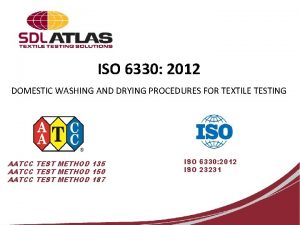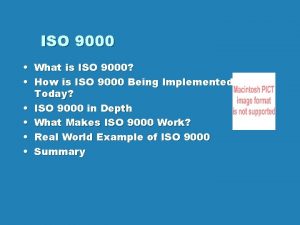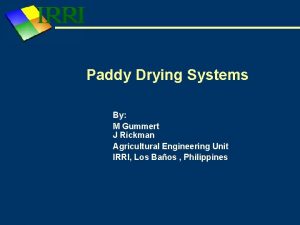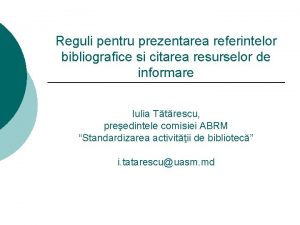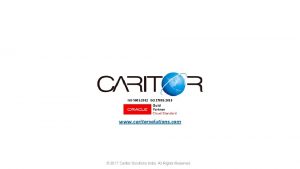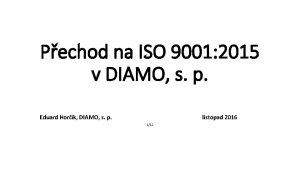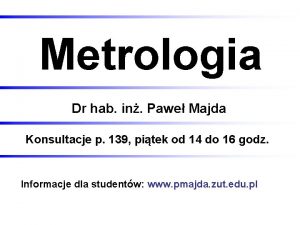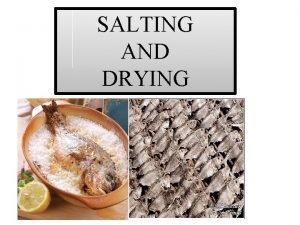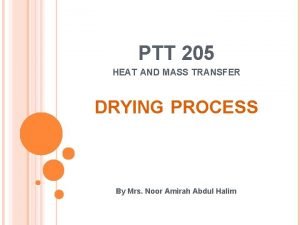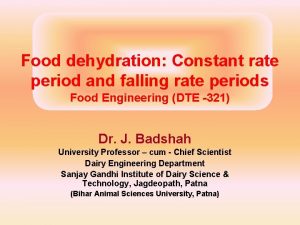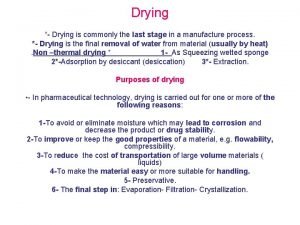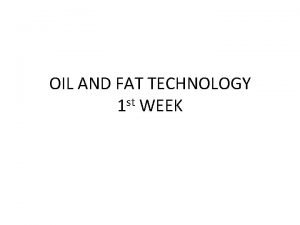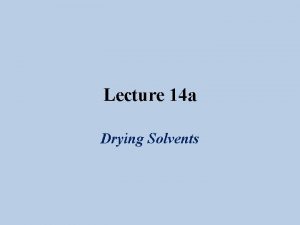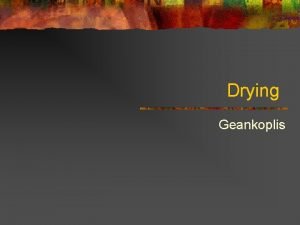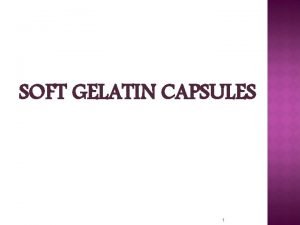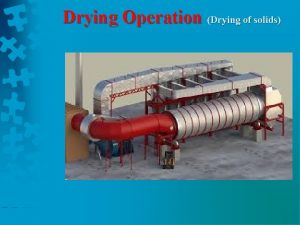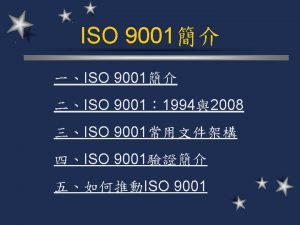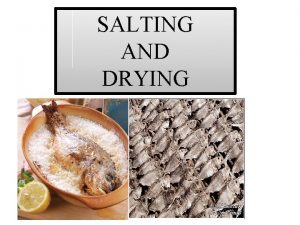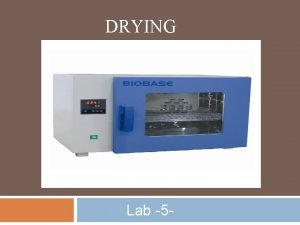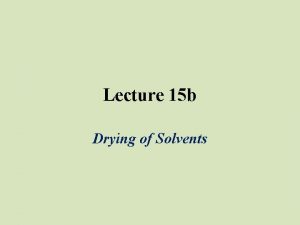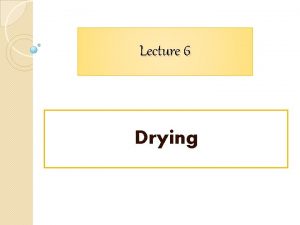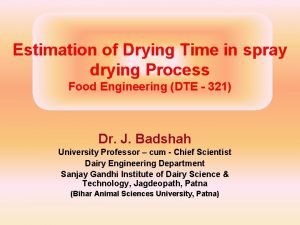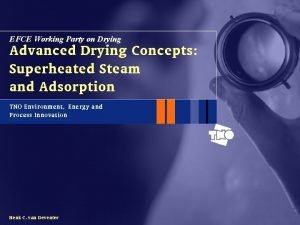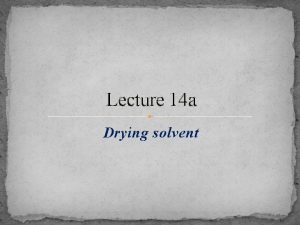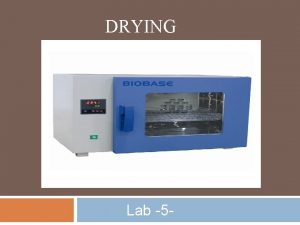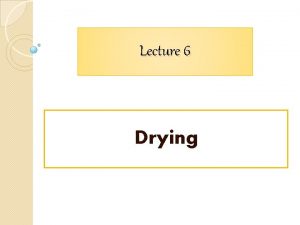ISO 6330 2012 DOMESTIC WASHING AND DRYING PROCEDURES



















- Slides: 19

ISO 6330: 2012 DOMESTIC WASHING AND DRYING PROCEDURES FOR TEXTILE TESTING AATCC TEST METHOD 135 AATCC TEST METHOD 150 AATCC TEST METHOD 187 ISO 6330: 2012 ISO 23231

THE HISTORY ISO 6330: 1984 – 1 st edition ISO 6330: 2000 – 2 nd edition ISO 6330: 2012 – 3 rd edition

WHY DO WE NEED THE STANDARD? Standard specifies domestic washing and drying procedures for textile testing. Washing procedures represent single domestic washes.

Why does the laundering is so important? - Dimensional stability - Colorfastness - Special properties (performance textiles)

WASHING PROCEDURES - 13 different washing procedures based on the use of the reference washing machine Type A: horizontal axis, front-loading type, - 11 procedures based on the use of the reference washing machine Type B: vertical axis, top-loading agitator type - 7 procedures based on the use of the reference washing machine Type C: vertical axis, top-loading pulsator type.

DRYING PROCEDURES Line dry, drip line dry, flat dry, drip flat dry, flat press and tumble dry.

TUMBLE DRYERS Type A 1 tumble dryer – Vented Type A 2 tumble dryer – Condenser Type A 3 tumble dryer – Large vented

WASHING BALLASTS Type I - 100 % Cotton ballast Type II - 50 % Cotton/50 % Polyester ballast Type III -100 % Polyester ballast

REAGENTS – 6 detergents are recommended WATER – hardness, pressure and inlet temperature are specified

WHY DO WE HAVE THE NEW STANDARD? - Wascators manufacturer introduced a new model, different to the …. . previous version - As the global document the standard was commonly used in Asia but the typical machine for that market was not specified - Version 2000 and amendment from 2008 were not clear on washing detergents - New (mild) washing programs were introduced for type A machines

THE DIFFERENCES? NEW WASHING MACHINES – TYPE A (Wascator) Horizontal axis, front-loading type.

NEW WASHING MACHINES – TYPE A Horizontal axis, front-loading type. - New dimensions and volume - All Wascators manufactured before 2002 do not conform to ISO 6330: 2012

THE DIFFERENCES? NEW WASHING PROGRAMES FOR TYPE A MACHINES WASHING PROCEDURES ISO 6330: 2012 ISO 6330: 2000 Procedure No. Agitation during heating, washing and rinsing Temp C 9 N 7 N 6 N 6 M 5 N 5 M 4 N 4 M 4 G 3 N 3 M 3 G 4 H Normal Mild Normal Mild Gentle 90 70 60 50 50 50 40 40 40 30 30 30 40 1 A 2 A 3 A 4 A 5 A 6 A 7 A 8 A 9 A Sim. Hand Wash Normal Gentle Gentle 90 60 60 50 40 40 40 30 90 40

THE DIFFERENCES? NEW WASHING MACHINES – TYPE B Vertical axis, top-loading agitator type.

THE DIFFERENCES? NEW WASHING MACHINES – TYPE B Vertical axis, top-loading agitator type. ISO 6330: 2000 recommended machines consist of a drum with an inner perforated basket 50 cm in diameter and 30 cm in depth

THE DIFFERENCES? NEW WASHING MACHINES – TYPE C Vertical axis, top-loading pulsator type. This is a new instrument for this standard.

THE DIFFERENCES? Washing detergents ISO Reference Detergents Detergent 2000 edition 2012 edition AATCC 1993 WOB No. 1 AATCC 1993 X No. 1 ECE (A) WOB No. 2 No. 3 IEC (A) No. 3 No. 6 IEC (A*) No. 4 No. 2 JIS Class 1 X No. 4 AATCC 2003 Liquid WOB X No. 5 AATCC 2003 Liquid X No. 5 Detailed composition of detergents can be found in the standard

THE DIFFERENCES? Washing ballasts

QUESTIONS?
 Iso 6330 test method
Iso 6330 test method Norma iso 9000 2000
Norma iso 9000 2000 Panicle drying advantage
Panicle drying advantage Domestic and family violence protection act 2012
Domestic and family violence protection act 2012 S68r family law act
S68r family law act Iso 9001:2012
Iso 9001:2012 Referinte bibliografice
Referinte bibliografice Iso 9001 2012
Iso 9001 2012 Iso 9001:2012
Iso 9001:2012 Iso 9001:2012
Iso 9001:2012 Iso 1101:2012
Iso 1101:2012 Salting fish
Salting fish Tray dryer calculations
Tray dryer calculations Simultaneous grinding
Simultaneous grinding Constant rate period
Constant rate period Advantages of freeze drying
Advantages of freeze drying Structure of triglyceride
Structure of triglyceride Drying solvents
Drying solvents Falling rate period of drying formula
Falling rate period of drying formula Plate process of soft gelatin capsules
Plate process of soft gelatin capsules
